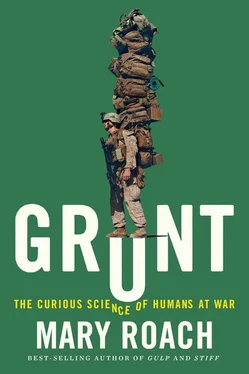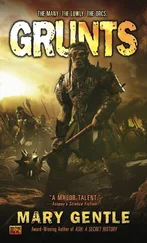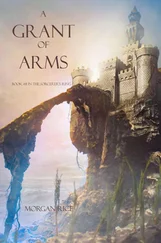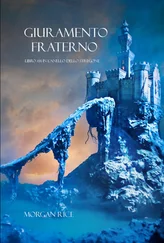The flies of the Gulf wars are recalled as maddeningly persistent, a function of food’s relative scarcity in the desert. During Operation Desert Shield, Navy entomologist Joe Conlon camped with a light infantry battalion in the Saudi Arabian desert near the Kuwait border. The flies served as an unpleasant but effective alarm clock. “You’d be asleep with your mouth open. Soon as dawn came the flies would be out, looking for food and moisture. They’d fly right in your mouth. You’d wake up to the sound of Marines coughing and cursing.” USDA fly researcher Jerry Hogsette told me about a team of entomologists in Operation Desert Storm who drove off into the empty desert until they could no longer see the base, stopped, and opened a can of sardines. Within seconds, there were flies.
The fly’s tenacious commitment to humans and their filth explains the military’s enduring commitment to extermination: Soldiers constantly waving off flies are soldiers poorly focused on their job. When the job involves shooting and not getting shot, that’s a hazardous distraction. With livestock, too, the distraction can be lethal. Hogsette says a cow can become so focused on shooing flies that it forgets about eating and starves. The agricultural community uses the term “fly worry.”
The Gulf wars saw a related condition: insecticide sprayer worry. Shortly after the United States arrived in Kuwait, military intelligence determined that Saddam Hussein had purchased forty insecticide sprayers. With all the talk of “weapons of mass destruction,” paranoia was running high. Joe Conlon was brought in to assess the likelihood—and the danger—of the devices’ being used to disperse chemical or biological weapons. He deemed it unlikely. “You can’t control where the cloud goes. You’re just as likely to poison your own troops.” Conlon’s professional opinion was that Saddam Hussein wanted to kill some flies.
High-volume fly traps are a popular tool on military bases, because they’re low-maintenance. Here the artistry is in the lure. NECE has tested different wavelengths of ultraviolet light, varied background colors, and all manner of chemical attractants. There was a fleeting moment, during World War II, when fly attractants played a more strategic battlefield role. Nazis had poured into a Spanish enclave of Morocco with the aim of cutting off the Allied supply line to troops fighting Erwin Rommel’s Afrika Korps. The Pentagon called upon Stanley Lovell, director of research and development for the Office of Strategic Services or OSS (precursor to today’s CIA), to devise a way to quietly, as Lovell put it in his memoir, “take out Spanish Morocco.”
“I evolved a simulated goat dung,” Lovell wrote, improbably. Spanish Morocco being a land with “more goats than people,” the decoy dung would, he reasoned, fail to arouse suspicion. The plan was to spike the turds with both a powerful fly attractant and a cocktail of pestilent microorganisms and then drop them from planes during the night. Filth flies would take over from there: landing on the dung, picking up pathogens, and delivering their deadly payload to the Nazis’ meals.
The OSS files in the National Archives and Records Administration include dozens of entries for gadgets and weapons dreamed up by staff, [44] My favorites, in alphabetical order: ashless paper, boosters and bursters, collapsible motorcycles, Hedy Lamarr, luminous tape, nonrattle paper, paper pipes, pocket incendiaries, punk type cigarette lighters, smatchets, sympathetic fuses, and tree climbers.
but I found nothing under “goats,” “dung,” or Lovell’s name for the project, Operation Capricious. Lovell wrote that he and his colleagues were “well along” with it when word arrived that the Germans had withdrawn from Spanish Morocco. Perhaps. I suspected that the killing shit never made it further than the drawing board. Or, more likely, the cocktail napkin.
And then I came upon an OSS file labeled “Who, Me?” And it was clear I had underestimated Stanley Lovell.
10. WHAT DOESN’T KILL YOU WILL MAKE YOU REEK
A Brief History of Stink Bombs
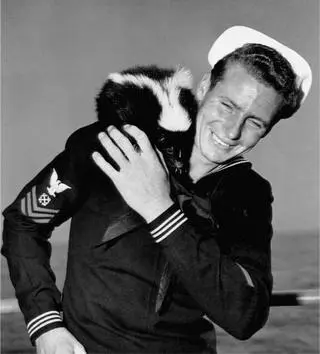
THEY WERE MY FIRST secret documents, and they did not disappoint. Individual pages in the file were rubberstamped “SECRET” in oversize letters, once in the top margin and again at the bottom. An additional, wordier rubber stamp warned that the document contained “information affecting the national defense of the United States of America,” and that transmission of its contents was a violation of the Espionage Act. Some of the papers were marked for delivery “by safe hand,” the hand belonging to an ambitiously vetted government courier whose fine leather satchels no Customs agent was allowed to inspect.
The first document in the file was dated August 4, 1943, and addressed to Stanley Lovell at OSS—America’s espionage agency during World War II. It was from one of his British liaisons, and it referenced a memo from a gadget man in the British intelligence agency SOE (Special Operations, Executive). “Replying to your letter of the 6th July,” the memo began, as though we were headed for some dusty government protocol. And then veered abruptly off the tracks.
“Up to the present our employment of evil-smelling substances has been mainly for the purpose of contaminating individuals’ clothing.” The memo contained the secret formula for “S liquid” ( S for stench), an oily mixture with a “highly persistent smell suggestive of personal uncleanliness.” Included as well were plans for two delivery systems: a gelatin capsule to be pierced with a pin, squirted, and “dropped immediately once the operation is completed,” and a small brass spritzing device midway between a perfume atomizer and a pesticide sprayer, the latter to be “carried about secreted in the hand or pocket.” I pictured a British operative’s wife stumbling upon one in the pocket of her husband’s blazer, lifting it in front of her face and squeezing the bulb, expecting cologne and receiving instead another disquieting hint that her spouse was not wholly forthcoming about the particulars of his career.
The goal: “derision or contempt.” The demoralization and alienation of German and Japanese officers in occupied countries. Allied espionage agencies were keen to find cheap, low-profile devices to put into the hands of saboteurs and resistance groups, motivated civilians eager to help the cause.
The OSS, with help from weapons developers at the National Defense Research Committee (NDRC), got to work on a stench of their own devising. In his memoir, which was published twenty years after the war, Lovell downplayed SAC-23—“Contaminator, Stench”—as “comic relief,” an antidote to the “grim, bloody and sordid” job of creating “new and special weapons to kill people.” But the thickness of the files and the detailed, deadpan formality of their contents indicate otherwise. The SAC-23 project dragged on for two full years, sapping the patience and clogging the in-boxes of seven majors, [45] Including—attention, aging M*A*S*H fans—a Major Frank Burns. I nursed a fleeting hope that a Major Houlihan would appear on a CC list alongside him, but it was not to be.
eight lieutenants, four captains, and a wing commander.
Lovell’s original directive, as stated in his memoir, was for a substance with the “revolting odor of a very loose bowel movement.” (“Who, Me?” was Lovell’s cover name for SAC-23.) He wanted something to distribute among Chinese resistance elements for the purpose of humiliating Japanese officers. For some reason, Lovell believed the Japanese to be uniquely vulnerable to harassment of this nature: “A Japanese thought nothing of urinating in public, but he held defecation to be a very secret, shameful thing.” (Like racism.) The NDRC set forth additional requirements. It should have a “range” of at least ten feet “without backfire.” “It should be silent in operation.” Inconspicuous. Impervious to rain, soap, solvents. Conferring shame for a minimum of several hours.
Читать дальше
